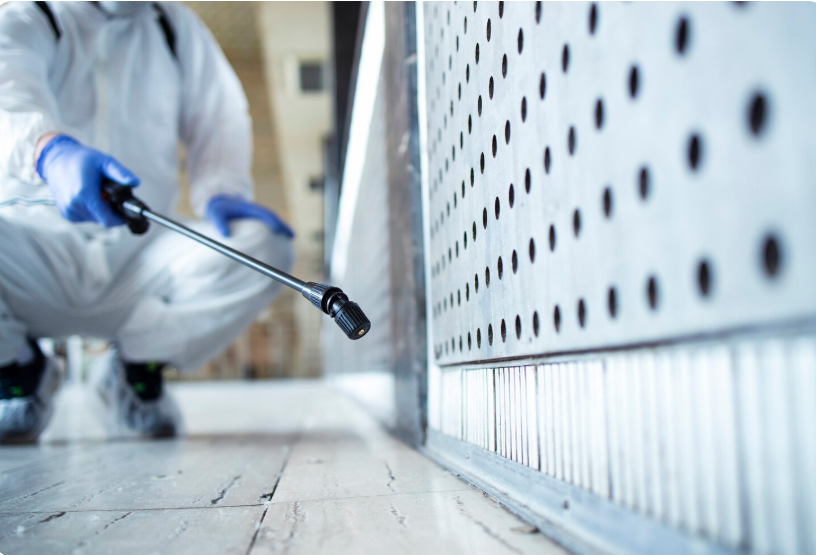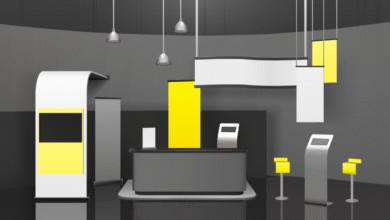Can You Really Keep Rodents Away Without Harmful Chemicals? The New Era of Rodent Control

No one wants to share their home with mice or rats. These small intruders can cause big problems—from chewing through wires and insulation to contaminating food and spreading disease. Traditionally, the solution has been harsh poisons or sticky traps that harm both rodents and the environment. But things are changing fast.
Today’s rodent control strategies are cleaner, safer, and smarter than ever. The new era of humane pest management focuses on prevention, natural repellents, and eco-friendly technology instead of toxic chemicals. Homeowners, businesses, and even large facilities are learning that you can protect your space without putting people, pets, or wildlife at risk.
Why Traditional Rodent Control Needs an Upgrade
Hidden Health Risks From Toxic Chemicals
Old-school rodenticides contain anticoagulants and other harmful compounds that can poison not just rodents but also children, pets, and local wildlife. When misused, these substances contaminate soil and water, creating long-term environmental damage.
Collateral Damage to Pets and Ecosystems
Poisons don’t stop working once they kill a mouse. Secondary poisoning—when a predator like an owl, hawk, or cat eats a poisoned rodent—causes major harm to local ecosystems. This ripple effect disrupts natural pest balance, allowing more infestations in the long run.
Ineffective Long-Term Results
Chemical treatments may wipe out part of a population, but they rarely fix the root cause: access to food and shelter. Without sealing entry points or improving sanitation, new rodents move in within weeks, making the cycle endless.
The Rise of Humane and Eco-Friendly Rodent Control
Prevention Through Smart Home Maintenance
Modern rodent management starts with exclusion, not extermination. Professionals focus on blocking access points—tiny gaps in walls, roofs, or under doors that rodents use to enter. Steel wool, copper mesh, and silicone sealants are simple but effective barriers. By closing these entryways, you eliminate the need for toxic bait altogether.
Natural Repellents and Essential Oils
Certain smells repel rodents naturally. Peppermint oil, eucalyptus, clove, and citronella contain strong scents that rodents dislike. Many homeowners now use diffusers or spray mixtures made with these oils to keep areas like basements, garages, and attics rodent-free. While not a permanent fix, these natural solutions act as a first line of defense without harming the environment.
Ultrasonic Devices and Smart Sensors
Technology has made rodent control more innovative than ever. Ultrasonic repellents use high-frequency sound waves that drive rodents away without chemicals or traps. Smart pest monitoring systems equipped with IoT (Internet of Things) sensors can detect rodent activity in real time and alert users before infestations spread.
Humane Trapping and Relocation Methods
Live Traps That Avoid Harm
The shift toward humane rodent control has brought new trap designs that catch rodents alive instead of killing them. Cage-style traps and one-way entry systems allow homeowners to remove pests safely. After capture, relocation to an appropriate outdoor environment completes the process humanely.
Legal and Ethical Relocation
While relocating rodents is humane, it must be done carefully. In many regions, wildlife agencies recommend releasing animals a safe distance from residential areas to prevent re-entry. Relocation should be combined with home sealing and sanitization to ensure rodents don’t return.
Encouraging Natural Predators
A balanced ecosystem is nature’s pest control. Encouraging natural rodent predators—like barn owls or snakes—helps maintain rodent populations naturally. Some farmers and gardeners even install owl boxes to attract these hunters, reducing the need for traps or poison.
Benefits of Humane Rodent Control
Safer for Families and Pets
Chemical-free solutions protect children and pets from accidental poisoning. With non-toxic repellents and live traps, you can manage infestations safely without fear of exposure to harmful substances.
Better for the Environment
Eco-friendly methods reduce toxic waste, soil contamination, and wildlife harm. Using natural deterrents supports biodiversity and protects local ecosystems—something harsh chemicals simply can’t do.
Sustainable Long-Term Results
Because humane rodent control focuses on prevention, the results last longer. Once access points are sealed, sanitation improves, and food sources are removed, infestations are less likely to return. This proactive approach saves time, money, and frustration.
The Science Behind Smarter Pest Prevention
Understanding Rodent Behavior
Knowing what attracts rodents is half the battle. Rats and mice seek warmth, shelter, and food. They can squeeze through gaps as small as a dime and reproduce rapidly—up to 10 litters per year. Understanding these behaviors allows experts to anticipate infestations before they happen.
Environmental Design and Sanitation
A cluttered home or workspace gives rodents more hiding spots. Regular cleaning, organizing storage areas, and removing debris outside your property help reduce nesting areas. Storing food in airtight containers and keeping trash sealed also cut off easy food sources.
Data-Driven Pest Management
Some modern facilities now use data analytics to monitor pest activity trends. By tracking when and where rodents appear, managers can schedule targeted maintenance and deploy prevention measures at optimal times. This scientific approach minimizes guesswork and unnecessary chemical use.
Common Challenges in Chemical-Free Rodent Control
Patience and Consistency
Humane methods take time. While poison can deliver fast results, exclusion and trapping require persistence. Rodent-proofing a property is a process—one that pays off long-term but needs consistent follow-up.
Misuse of Natural Remedies
Essential oils and ultrasonic devices are helpful but not miracle cures. Their effectiveness depends on correct placement and maintenance. For example, oils must be reapplied regularly, and ultrasonic devices should cover multiple areas to prevent rodents from adapting.
Balancing Safety and Effectiveness
Not every method works in every environment. Commercial spaces, for instance, may need stronger control measures than small homes. Combining natural repellents with smart monitoring often yields the best results.
The Future of Rodent Control: Smart and Sustainable
Artificial Intelligence and Predictive Control
The latest innovations in AI (Artificial Intelligence) are transforming pest management. Algorithms can now predict rodent behavior patterns, helping homeowners and property managers take preventive action before infestations begin.
Eco-Friendly Products and Bio-Based Materials
Manufacturers are developing biodegradable traps and plant-based repellents that maintain effectiveness without harming the planet. These advancements align with global sustainability goals, making pest control safer for everyone.
Integrating Rodent Control With Smart Homes
Future smart home systems will integrate pest monitoring with existing home automation. Imagine receiving a notification on your phone the moment a rodent sensor detects movement—allowing you to act before damage occurs.
Conclusion
Keeping your home rodent-free doesn’t have to mean filling it with poison. The new era of humane rodent control proves that smart, sustainable solutions can be both safe and effective. From natural repellents to smart monitoring systems, these methods put prevention ahead of extermination.
By understanding how rodents think, sealing entry points, and using non-toxic tools, you can protect your home without harming the environment—or your conscience. The next time you hear scratching in the walls, remember: the future of pest control isn’t about killing what’s unwanted. It’s about creating a cleaner, safer world where humans and nature can coexist peacefully.



